|
When Onyx Path Publishing (OPP) announced the crowdfunding campaign to convert Calibre Comics’ Legendlore from four-color funny book to tabletop RPG, I was interested. Developer Steffie de Vaan reached out to talk about the project which resulted in this interview. Then, due to coronavirus, OPP decided to cancel the project. Steffie was gracious enough to answer a few follow up questions about how this pandemic impacted the game and how it will resurrect later this year. EGG EMBRY (EGG): Steffie, thanks for talking with me. At EN World, we spoke about your work on Vampire: The Masquerade 5e: Fall of London from Modiphius Entertainment. Now we’re talking about the Legendlore RPG Kickstarter from Onyx Path Publishing. For those that are not familiar with this setting, what is Legendlore and The Realm? STEFFIE DE VAAN (SDV): The Realm, and later Legendlore, is a comic initially published by Arrow Comics and later by Calibre Comics. They’re about a group of four friends who open an enchanted chest and find themselves teleported into the Realm, a fantasy world full of elves, dwarves, and at least one evil dragon in disguise. They go on adventures, some of them travel back to Earth, some don’t, and I think at least one dies. EGG: We started this interview before the decision to cancel this crowdfunding campaign was made. What drove that decision? SDV: It’s an uncertain time for everybody and the Kickstarter wasn’t getting the traffic we think it would normally do. We were on track to funding, but we felt Legendlore can and deserves to do better than it was. There’s also been people on our end understandably focused on other things and all in all we just felt it was better to postpone. EGG: What inspired Onyx Path Publishing to pick this Caliber Comics series for conversion to tabletop? SDV: The whole idea of “YOU travel to another world” is just so iconic. We see it time and again, in everything from Narnia to the old Dungeons and Dragons cartoon. And Legendlore is such a rich setting with great nations, villains, and a couple unique takes on people and monsters. EGG: Who is working on this project? What role are you taking? Are any of the creators from the original comics working on this? SDV: I’m the developer. I read the comics front to back (most if not all writers did) to distill the essence of Legendlore into a pitch and then an outline. We have some amazing writers on this book, so I’ll just list them all. Elizabeth Chaipraditkul, Jacqueline Penny Hart, Travis Legge, Megan Mackie, Ashley May, Katriel Paige, Roman Trevisanut, Vera Vartanian, and Ashley Warren. The people from Calibre were involved in the pitch and outline, as well as final approvals, but not in the actual writing. EGG: This RPG exists in a fantasy world and in “our” world. Will each player have two characters, one for “Earth” and one in the Realm? Will fantasy creatures be able to join the PCs back on our “Earth”? SDV: You get one character who can move back and forth (assuming you find a Crossing, which is a portal connecting Earth to the Realm). Steffie the human writer becomes Steffie the pixie Bard. And when I go back, I probably (but ultimately it depends on the group) become human again. Both are me though—same experiences, background, and personality. As to whether or not creatures from the Realm can come back with them, that depends on the DM. It’s never happened in the comics, but that doesn’t mean it can’t happen in your campaign. EGG: What makes D&D 5e the right system for this setting? SDV: I play D&D 5E and the system is just solid and easy to use. Given that Legendlore is a fantasy setting, it was a great fit. EGG: For those 5e fans that are on the fence about backing this, what’s your pitch to them? SDV: Remember that time when you statted yourself as a vampire, or an elf? (Because we ALL did it.) You can do that in Legendlore. In fact, the system is specifically designed to let you play fantasy you. We’ve got backgrounds for humans from activists to roleplaying fans. We also want everyone to feel at home in the Realm, Realmborn people come in all colors, genders, and orientations. Most importantly though, Legendlore gives you full player agency. You choose which parts of yourself you want to bring into the Realm, and which you want to drop. Seasonal allergies, anxiety, and glasses? Your choice whether those Cross with you, or if it’s magically changed. Same goes for any body dysphoria. Completely your choice. EGG: Correct me if I’m wrong, but continental Europe’s native comic format is the large album instead of the American-style floppy comics, right? Were The Realm and Legendlore, being indie American comics, readily available in Europe? Were you familiar with the series? SDV: We traditionally have big albums, yes. So, I am certain I’ve held a comic with the Legendlore letters/logo a solid two decades ago. But when I read the comics for this project the story was completely new to me. So either there are more fantasy comics using that lettering, or it’s been so long I don’t remember the content. EGG: The Legendlore RPG is going to come back and when it does, are there any thoughts about expanding some of the preview options? For example, OPP is great about sharing access to the rough draft of the game via backer-only updates. Are there any thoughts about doing the same, but with digital versions of the comics? Or other approaches to help spread the word about this setting? SDV: I am not sure we’re allowed to preview the comics themselves, because those are completely owned by our partners at Calibre. But we are planning actual plays of Legendlore which we expect will get people excited. EGG: With DC Comics’ The Last God making the jump from comic to D&D 5e supplement and Legendlore coming from OPP, is now the right time for publishers to look at comics as inspiration for their tabletop games? SDV: I love comics. If anyone wants to take a chance on hiring a new comic writer: contact me. The stories are so rich, and they’re such a good mix of show (with the visuals) and tell (with dialogue and captions). Plus most comics are serials so you have an entire background to pull from right there. But I also think we need to keep supporting new stories, as well as small companies that maybe don’t have the funds a DC Comics project does. So a bit of both, maybe. EGG: During these trying times, tabletop RPGs are a great way to connect with others and escape (and easy to do via many online platforms). Beyond this project, what else are you working on? SDV: I’m currently working on Exalted: Essence Edition and Scion: Saints and Monsters for Onyx Path Publishing, and Tiny Cthulhu for Gallant Knight Games. The Stargate RPG is coming to Kickstarter soon. Cat Evans and I are working on a Theros product for the DMs Guild, which is a lot of fun. And Liz (Elizabeth Chaipraditkul) and I are always writing new games for our Patreon. EGG: Thanks for talking with me. Where can fans learn more about the campaign, OPP, and follow your work? SDV: Here’s Legendlore and Onyx Path. And here’s me: Twitter, Wordpress, and Patreon. Egg Embry is a freelance tabletop roleplaying game journalist writing for EN World, Knights of the Dinner Table, RPG News, d20 Radio, the Tessera Guild, the Open Gaming Network, the AetherCon Convention Magazine, GAMA’s Around the Table, and more. His areas of focus are RPG crowdfunding projects and RPG reviews as well as interviews with a range of gaming professionals from freelancers to CEOs. Beyond journalism, he dabbles in freelance writing and producing gaming zines for the roleplaying zine-aissance. Picture Reference: https://www.kickstarter.com/projects/200664283/legendlore-rpg-setting-for-5th-edition-fantasy-roleplaying A.C.: After Collapse™ (A.C.) is a flexible d20 based post-apocalyptic tabletop role playing game. A.C. encourages classless character creation and dynamic world building after a societal collapse of many causes. These could include any type of civilization ending scenario: nuclear Armageddon, ecological disaster, medical epidemic (including zombie plagues or other imagined ills), civil or political factors, an AI menace, or anything else that can be imagined. Gameplay starts five decades or more after the last national government ceases to function. Men and women of this period think of themselves as “Survivors” because they must contend with the unforeseen consequences of actions taken long ago. 1) Adaptability All major aspects of the post Collapse experience are scalable in a way that allows each participant to enjoy basic or advanced play. Referees control the extent of knowledge that is available to players before play starts, including background knowledge that provides context and Basic/Advanced skills that could be hard to find or nonexistent. Temperature sensitive Structure Points can be assigned by referees to anything breakable. These simulate wear and tear that causes irreplaceable equipment to eventually fall apart. Armor Points can be similarly assigned to simulate the durability of armor, weapons, etc. Players and referees alike benefit from scalable effects of poison, radiation, and the effects of combat (i.e., lethal and/or nonlethal damage). Player characters are awarded Character Points (CPs) by the referee as a form of experience that can be used to improve attributes, acquire new skills, or upgrade basic skill subfields to advanced skills that represent more meaningful expertise. 2) Extent Of Knowledge Knowledge becomes power as referees decide if contextual background knowledge by category is common, obscure, or lost. Having that context informs players and referees alike of what is familiar to postapocalyptic makers and takers or what is mysterious to them when they first encounter it. The same framework is applied to the Basic/Advanced Skills that represent what heroes and villains can really do. 3) Classless Character Generation Age determines how much background knowledge and how many basic skills any character has before they are introduced to the setting. The number of dice rolled for each of the nine attributes is determined by the age of the character before they are introduced to the setting. Each is allotted 1d6 for every six years of age, to a maximum of 30 years. One category of background knowledge can be chosen for every full six years of age a character is before play. One basic skill group for every three years of age can be selected for characters prior to starting the game. Players are free to mix and match Basic skills that have been allowed by the referee (i.e., as common knowledge). 4) Combat Violence is adjudicated in 10 second rounds using a d10 initiative system to decide who goes first on a second by second basis. Characters and NPCs have Target Profile Numbers that serve as “To Hit” numbers (similar to armor class) when opponents want to attack them. That number is reduced according to amount of encumbrance the character or NPC has to slow them down, making them easier to hit. Some attributes provide additional modifiers. Injury is simulated by subtracting Hardiness points when blood is drawn or bodies are harmed; loss of Vigor points represents depletion of physical energy that can result in unconsciousness. Heat signatures and electromagnetic emissions are included for advanced game play. 5) Structure Points, Armor Points A.C. presents a system of temperature sensitive Structure Points and Armor Points that can be assigned to anything for the purpose of simulating durability. Structure Points are subtracted on a one to one basis when items or objects are damage by combat effects. Armor Points must be overcome and reduced before individuals can be harmed, simulating physical protection factors relevant to combat. Loss of all Structure Points or Armor Points indicates the item has been destroyed. 6) Poison, Radiation Nothing is more quintessentially postapocalyptic than toxins and radiation. Threat level scales have been assigned to both in an effort to flexibly simulate them in any form the referee wants to portray. Poison can be fast or slow, debilitating (weakening), or lethal. Radiation can be debilitating, harmful, mutagenic, or harmful AND mutagenic. When combined with the effects of weather, sighting rules, heat signatures, and electromagnetic emissions, poison and radiation become formidable threats for any group of intrepid explorers. 7) Renaissance Or Ruin? A.C. is a postapocalyptic tool kit that allows you to simulate and experience a wide variety of themes and situations. We’ve provided a big backstory to get you started, involving the rise of Artificial Intelligence (AI). Everything from firearms and body armor to electronics has been presented with enough detail to encourage the exploration of a shattered world, crafting to make what you want or need, and as much empire building as you can handle. Will you learn from the past and make a better future or will you forget the old world and make the most of whatever you can take? Justin Oldham is a visually impaired writer and game designer who lives in Anchorage, Alaska. He is the creator of A.C.: After Collapse, as well as the anthologies and novels based on the game. They include: Before The Collapse, During The Collapse, Haven’s Legacy, and Search for Haven Justin has written on the subject of his vision impairment. Other credits include: Tales from the Kodiak Starport, Showdown at the Kodiak Starport, Crisis at the Kodiak Starport, Bibix, The Fisk Conspiracy, and How To Write Conspiracy Fiction. Picture provided by the author. Welcome to Avalon, a city with secrets held tight to her vest, crime and corruption are openly practiced, and “strange” being the default state. While the general feel of Avalon is familiar, there are some distinguishing features that make it unique. Survival, hard choices, and player driven play are some things you will find on the Streets of Avalon. There are no real heroes here, just those trying to survive and those that do are counted among the lucky. As a kickstarter backer, I received an early release of the PDF to check out. Here's a few reasons to give it a try. 1) City Play Streets of Avalon centers around a sprawling city, the last city after the final battle in the Soul War. Avalon is a gritty, steampunk (really steampunk, not steamfun or steam-is-cool), noir setting with aberrations, undead, and the mysterious Lamplighters: mystics from another realm with the urge to help the beings of this realm. The city is ruled by magistrates and their griffons, but money is the true despot here; seems everyone is open to a bribe. The history and current mood of Avalon is well explained, but still has plenty of mysteries left for the dungeon master to flesh out. This city setting isn’t a building by building account of the city, rather a background to set your games against. In a world with the highly detailed Forgotten Realms, one of the more exciting ideas in this book is “What does your Avalon look like?” 2) Unlimited, Changing Play Avalon is a city campaign, there isn't really a reason to leave the city, and if one area gets boring or finished, you just move on to a new area of the city. Play centers around neighborhoods, small sections of the city that you build up with a three step process: 1 - who’s in charge, 2 - groups, people, places, 3 - adventure locations and ideas. This is explained in a succinct way with three sample neighborhoods provided to mine for ideas. With play focused on politics, heists, investigation, monster hunts, and dungeoneering, as opposed to the general theme more D&D products lean to, each neighborhood the players move to can be a different taste of what Avalon has to offer. The city has a really familiar feel which makes it easy to start playing in. The themes in this city can also be found in Marvel’s New York and DC’s Gotham, movies like Dark City and Brazil, or books such as Diamond Age, Boneshaker or The Difference Engine. 3) Unique Flavors Of Fantasy Avalon has no gods. Priestly magic is granted through study just like arcane. This is a great choice by the author and has no real mechanical effect, and is just a small tweak on the game's rules as written (cleric's spellcasting functions like a wizard's spellcasting normally does). This book is full of flavorful delights that make Avalon strange and unique. Examples include Lamplighters, who are outsiders with knowledge and the compulsion to help citizens for a strange price, a different take on the investigation skill, focus on a living city that is not waiting for the characters to show up, and planar creatures trying to break through and affect Avalon in some devious way. Within the 5th edition D&D universe these things are all possible in any setting, but when you put the focus on them it brings out a new flavor that really compels players to act instead of react. 4) Random Encounter Tables If you know anything from the articles I’ve written here, it’s that I love tables. Clocking in at thirteen pages of random encounters, a lot of the feel of Avalon is communicated in these tables. They are not just full of entries like “2d4 gang toughs,” but a sentence or two with little nuggets of story baked in. Most of these are designed to lead the players (and the dungeon master) onto an unplanned, emerging adventure. As a dungeon master, I appreciate the work that went into these tables, with many ideas about the people and creatures of Avalon, as well as setting information you could do worse than to start every session here. They lend themselves to development at the table instead of before, a style that I really enjoy, giving the dungeon master some unknown fun as well as the players. The tables go over eleven different areas each with twelve encounters. That’s one hundred thirty-two story starters! They are even fairly system agnostic so you can use them in your own campaign. All these things lend to Avalon's dark, gritty theme. Bringing the game to a street level with focus on who you live by and what they are doing is the best part of this setting. If nothing else, this makes a good read for doing some alleyway adventures or even a Defenders-like campaign. This all works well with the newest version of dungeons and dragons and it’s heroic play; letting the characters persevere and play a part (albeit small compared to the vastness of Avalon) in the stories that unfold. Brett Bloczynski has some great ideas in his head, hopefully we’ll get to see more soon. Streets of Avalon is not yet available but will be soon on DriveThruRPG. Richard Fraser has been roleplaying since the early days of Dungeons and Dragons and started with the red box in the eighties. He currently prefers to DM fifth edition D&D, though reads a lot of OSR and PbtA. He currently has podcast, Cockatrice Nuggets and maintains a blog at www.slackernerds.com, and recently started a Patreon. Picture Reference: https://www.kickstarter.com/projects/encoded/the-streets-of-avalon Ahoy, ye landlubbers and salty sea dogs!
As you may or may not know, I’m a big fan of Pugmire. I’ve also done some work for the property, specifically for Adventures for Curious Cats and Roll of Good Dogs and Excellent Cats, both available on DriveThruRPG as we speak. Now, the folks that don’t know me might also be like, “what the heck is Pugmire anyway?” Well, the Realms of Pugmire is a fantasy world setting for a D&D 5e OGL game of uplifted dogs, cats, and more where humanity has only left remnants of their society and technology. In that world, those animal people remember humanity, Man, or The Old Ones very vaguely. It’s a great mash-up of the science fantasy tropes of ages past. The setting is family friendly but deep enough for several layers of play. Currently, Onyx Path Publishing and Pugsteady, the two companies behind Pugmire have launched a Kickstarter for their newest supplement, Pirates of Pugmire. I’m going to list the things I love about this new book below. 1) Birbs While I have never had a bird as a pet, I do have an affinity for birds, particularly corvids (crows, ravens, bluejays, etc) and penguins. Birds have been hinted at in previous Pugmire books, so to have the chance to finally get playable rules for them is very exciting for me. The birds include Parrots (Pirates, duh), Crows, and Sparrows. And, because not all birds have been uplifted, you can have a parrot pirate with a parrot on his shoulder… I’ll let that visual sink in. Birds appropriately have a different religious vision than dogs or cats, and their focus on the Sky Kingdom is really intriguing. 2) Gunpowder And Gunpowder Fear Guns are often one of those things that gamers want in their D&D or similar games but they frequently destabilize a game, just like they did warfare. Gunpowder weapons are integral to piratical play though, and in Pirates of Pugmire Eddy Webb and team have created a clever way to introduce these elements. Gunpowder weapons are in their early stages of development, but also cats, dogs and others are very prone to reacting poorly to loud noises. The mechanic used to justify why gunpowder weapons are rare is Gunpowder Fear, which gives disadvantage to those who are frightened by blasts. There are Callings, classes for Realms of Pugmire, that negate this effect for themselves, but means if they fight in mixed company they need to be very careful. I think it’s an elegant design element that fits the setting well. 3) Lizards, Turtles, Snakes Lizards get an NPC stat block in Monarchies of Mau, and are discussed in the last of the three adventures in Adventures for Curious Cats. However, Pirates of Pugmire is the first full treatment we are getting on these very interesting folks. While I’m not fond of lizards or snakes as pets, the idea that they would be uplifted alongside dogs and cats is intriguing. Like birds, their society is very different than cats and dogs and they take advantage of their cold blooded nature in very interesting ways. Lizards are traders and societally they are a mix of Eastern Slavic culture and Middle Eastern human cultures. That’s a broad brushstroke, but you can see the influences on the way they dress and act and their families are very interesting. 4) Sail the Seas This is a book about pirates, and while the non-pirate elements are great the core conceit is well-developed and has just a bit of a comical edge. This allows for really interesting story fodder. Islands appear and disappear, treasure can be uncovered and looted, and adventure can be had. Because Pugmire is designed to be more family friendly, some of the more horrible things that pirates have done and do are left in the subtext, or are just not present altogether, but I think this makes the type of pirates presented much more palatable. There is a lot of adventure to be had on the Acid Sea, and Pirates of Pugmire offers a grand voyage for those willing to step upon the deck of the ship. You can find Pirates of Pugmire here! Pirates of Pugmire is a fantastic extension to the Realms of Pugmire world, and I’m excited to sail the seas. This project takes some of the best elements of the 5e ruleset and makes them easy to access and fun to play. If you don’t, I’ll be makin ye walk the plank! Josh is the intrepid Chief Operations Officer of High Level Games and he organized the first HLG Con. With 20 years of playing rpgs, Josh started with Mind's Eye Theater LARPs and loves the World of Darkness. He runs, www.keepontheheathlands.com to support his gaming projects. Josh is the administrator of the Inclusive Gaming Network on Facebook. He’s a serious advocate for inclusive gaming spaces, a father, and a graduate from the International Peace and Conflict Resolution graduate program at American University in Washington, D.C. You can also find Josh’s other published adventures here and here. Picture provided by the author. Back in August of 2016, Monte Cook Games launched a kickstarter for their game Invisible Sun. At the time, there was a lot of secrecy surrounding the game, with very little details of what all the obtuse terminology the game was using meant. It had numerous components, each with a name that wasn’t explicitly indicative of what purpose it served, and further, the game wasn’t made available online. It was described as a “Luxury RPG Experience.”
As of February 2019, however, Monte Cook Games has announced that they were going to release Invisible Sun digitally in pdf form, along with a digital preview of the game. When it initially came out, I mostly ignored it. Though with the release of the preview, I decided to dig into it a little bit, because I believe that an informed marketplace is a healthy one. If the title of this article is any indication, I was not impressed with what I was able to surmise. So for your reading pleasure and to help you make a more informed decision as to whether you should get this, I bring you Five Things Wrong With Invisible Sun! 1) It’s Expensive And Excessive When it was initially funded via Kickstarter, the lowest tier that gave you a copy of the game was set at approximately 200USD, and since then, the price for a pre-order of the next batch of these to be shipped out is about 300USD. This is a steep price tag for any game, especially when you consider that the trio of books for Dungeons and Dragons is about 150USD (oftentimes much less), with the options to eschew certain books if you don’t want or need them. Even the digital copy of Invisible Sun goes for about 100USD. While Invisible Sun does come with numerous books, there’s also other props it comes with that, frankly, probably aren’t necessary. Props such as The Testament of Suns, which is a plastic hand meant to hold a card for everybody around the table to see. Invisible Sun’s weight, according to its listing on Amazon, is 30lbs (about 13.5kg). There’s a lot in this box which, even if one isn’t opposed to paying a high price point, still means you’ll not only need to find room for this 30 inch cube (about 75cm), but you’ll need to lug it around and move it about when you’re going to play. And the game has several books, several decks of different cards, and several other things that contribute to our next concern... 2) It’s Poorly Designed, Organized, And Explained The rules and all the pertinent information needed to play the game are spread across four different books, as well as numerous different decks of cards. Some of these decks contain information that isn’t reproduced in any of the books, according to their web page. This means if one of these cards is lost, that’s a part of the game that’s likely to be lost as well. Four books sounds like an incredible thing for a game to have, and I will give props to Invisible Sun because they do seem to divide the content of the books up pretty reasonably: basics information in one book, setting information in another, etc etc. That’s an idea I can get behind, since one of my favorite games, Tenra Bansho Zero, has a similar setup for its English edition. However, if the table of contents is to be believed, the index for Invisible Sun is located in the back half of the book “The Gate.” While I’m fond of the multi-book approach, putting the index in just one book like its an encyclopedia does open up some problems. What if that book is unavailable, and you need to find a specific piece of information within it? Furthermore, on the subject of indexes, Invisible Sun does a little bit of indexing throughout itself. This is a welcome answer to the issue of the index being in only one of the books, but, they picked a jarring place to put these mini-indexes: right in the center of the page. 3) It’s Not As Original As It Claims Invisible Sun makes some very bold claims; among these being that it’ll change how RPGs are played, it’s a new way to play RPGs, and also that it includes “magic that is truly magical.” These are all claims that, at best, are exaggerated, with one of the big selling points being that includes rules for how to play without having everybody present, or even when the GM isn’t present. On its own, that isn’t a problem. How to handle player absence would ordinarily be something I’d welcome in a rulebook. It’s one of the praises I sing of Meikyuu Kingdom. In fact, if a player character is absent for a session, there are codified rules on how that character can still contribute to the game. However, these are issues the greater RPG community has, for the longest time, already solved. We’ve figured out how to run games without a GM, we’ve already come up with and codified the idea of flashbacks as a gameplay device, and we’ve also come up with having one-on-one scenes between GM and Player. It takes hubris (or being wildly out of touch) to codify these things we’ve been doing for so long, and use it as a selling point for your boutique priced game. 4) It’s Pretentious “Invisible Sun is deep. It’s smart. Just like you. Invisible Sun will change the way you play rpgs.” That is the the final line in the original sales pitch for Invisible Sun, the crowning gem after a passage of nonsense and promises of solving problems that were already solved. This page has since fallen off the Invisible Sun website, replaced instead with a somewhat more informative one that describes the setting and premise a little better. Arguments could be made in contrast to the first three points: Invisible Sun is smart because it codifies these solutions the community has solved. It should command a higher price for this benefit, since there are games that don’t do this. Other games have obtuse settings and a blurred line between where rules and setting information are. However, it’s this collection of traits, convoluted layout, obtusely described setting, high price point, and being described as a smart game for smart people, that marks the sort of snob appeal that makes it pretentious. Given that this hobby is social in nature, though, it behooves me not to villainize anybody who likes this games. So more power to you if you were one of the folks who got your hands on the limited quantities of Black Cubes out there. Just keep this in mind: high barriers to entry, monetary or otherwise, means there’s not likely to be as many players for your game. I’ll end this article on a slightly more amusing note. 5) Bonus! Poor Security For Their Web App This factor isn’t really a strike against the game, so much as something that makes me think perhaps the team at Monte Cook Games is out of touch with the modern world. (After all, never blame on malice what could just as easily be incompetence.) Invisible Sun also had a companion app developed for it, though it isn’t available on the Google Play or Apple App stores. It’s instead what could best be described as a web-app, a website that has the functionality of a smartphone app. In my quest to dredge up more information on Invisible Sun, I came across the app, and wondered if registering might yield any secrets. There’s one field that asks for a specific word, from a specific page, of a specific book that Insibile Sun comes with. This is what we call a Dictionary Encryption, and it’s an old form of securing information that was also used as a form of copy protection in about the 1990s. However, the app doesn’t seem to include a captcha verification. Meaning somebody handy with scripting languages could potentially brute force their way through registration, trying every possible word to fulfill the Dictionary Encryption. (An activity that, we at High Level Games do NOT condone.) Aaron der Schaedel is aware of the folly of punching up at a name like Monte Cook in this hobby. Having been chased out of other circles for more absurd reasons, though, he remains unperturbed. You can chastise him for questioning a long time member of the industry via twitter: @Zamubei Picture Reference: https://www.montecookgames.com/store/product/invisible-sun-preorder/ The writing team here at High Level Games loves checking out new RPGs and sharing our experiences. Thus we have our attention focused on the horizon, ever watchful for the latest editions and originals in the works for our beloved hobby. As a New Year treat, we’d like to share with you the games and supplements that are “Coming Soon in 2019.” We don’t want to hog all the hype to ourselves; tis the season of giving, after all! With our breath bated and no further ado, here is each writer’s most anticipated 2019 release.
Editor’s Note: to the right of the dashes are the names of the writers that chose the games, not the names of the creators or publishers. 1) Swords of the Serpentine - Phil Political drama? Check. Magic that’s as dangerous to the user as the target? Check. Gritty setting? Check. GUMSHOE? Check. Swords of the Serpentine checks off almost all of my boxes (we’ll see how much black humor pops up), and looks to be another excellent addition to the GUMSHOE line. 2) Kamigakari: God Hunter - Aaron der Schaedel Kamigakari is a game from Japan, set in modern day Japan, where you play as a supernaturally endowed hunter of otherworldly beings protecting an unsuspecting populace of mortals otherwise ignorant to the horrors hidden from them. The kickstarter for Kamigakari was fully funded in November of 2018, and is expected to be available in the Summer of 2019. 3) Trinity Continuum: Aeon and Core - Josh Heath The original versions of the Trinity Continuum are some of the few RPG books I’ve held onto over the years. I took Adventure! and Aberrant to Korea with me while I was in the Army. These games are part of the reason I explored non-World of Darkness games. The 2nd Edition will include a modern setting similar to the shows Leverage or other action story shows without high powered Supers. The Kickstarter ran in 2018. It will be coming with the Space Opera setting, Aeon. I’ve been reading the 1st Ed books in exciting anticipation. Color me sold, this is the game I’m most excited about in 2019. 4) Strongholds and Followers - Rich Fraser Raising a cool 2.1 million dollars on kickstarter,Strongholds and Followers is my eagerly awaited gem. OK, so maybe this is cheating, but I didn’t think it would be out until January (technically the hardback won’t). Authored by the self proclaimed King of Kickstarter (jokingly, but it stuck as these things do), Matt Colville, this sourcebook for the fifth edition of Dungeons and Dragons covers something sorely missing for this edition of D&D. It’s strongholds, and followers, get it? I played D&D from Basic, Expert, Companion, Masters, and Immortals (BECMI) box sets through second edition before quitting and all of these editions had plans for strongholds and followers. Followers were an automatic thing once you reached ‘name level.’ See, in first edition, each level had a name associated with it and at ninth level you reached your name level (High Priest, Lord, Paladin, Ranger Knight, etc.). People started to know who you were so living in a bar isn't going to cut it anymore and some of these people want to join you, as opposed to just being hirelings. So Matt developed his own systems over the years and decided to release it to the public. With his extreme popularity, rightly so, on youtube he started a kickstarter and the rest is history. 5) Yellow King - Leyshon Campbell This Kickstarter has been blasting through stretch goals because everyone knows Robin Laws knows how to make a great game. The multiple worlds and multiple selves will allow campaigns to run the gamut between subtle horror, alternate realities, and full dystopia. The different eras allow for even more variety, up to and including a generations-long legacy game where you play the great-grandchild of your first character. But even for those who will not run a whole game, there is so much rich material to mine here that it’s just not possible to not get your money’s worth out of this one. 6) Mon Dieu Cthulhu - Ross Reid As a result of the success from the popular Achtung! Cthulhu, Modiphius has not only released multiple versions of it, but is also venturing out into other time periods. Mon Dieu Cthulhu currently only has a few fiction pieces but has been slated for a future RPG release which I for one cannot wait to get my tentacles on. Rubbing elbows with swashbuckling soldiers avoiding musket fire and blasting a cannon at the unholy gods of old is going to be a blast. 7) Silent Titans - Max Cantor This is an OSR adventure written by one of the most prominent OSR writers, Patrick Stuart, with layout by Christian Kessler and art by Dirk Leichty. Patrick is an excellent writer full of engaging prose and weird, totally original ideas, and Dirk’s art looks incredible. This kind of avante garde work truly elevates tabletop into an artform, and is unlike anything you’ll find from the mainstream publishers. If Patrick’s other works such as Veins of the Earth or Fire on the Velvet Horizon are any indication, this book will be full of all sorts of interesting mechanical considerations that can be taken into other games, and will probably work as a setting unto itself. I’ve already backed the (currently live, and already successful) kickstarter, and would encourage anyone on the fence to check out his other works! 8) An Atlas of the Horizon - Jarod Lalonde An Atlas of the Horizon is a passion project that has been worked on for the better part of five years, and as such, there are a lot of hopes riding on it. The kickstarter (which has already surpassed its goal) tells us that it is an intensely character driven rpg taking place in a world that is approaching a proverbial boom in culture, trade and all other aspects, and the world is just waiting for guiding hands to shape it into what it’s destined to be. Atlas is shaping up to be a game that looks to the horizon (god that nail was hit on the head) and smiles at what it sees. It focuses on optimistic themes, and honestly in this day and age, I really do think that we could all use a little more optimism. In all honesty, this appears to be a game that wants to make a statement, and I’m interested to see what it has to say in the coming year. What are some of the upcoming games you are excited for? Drop us a line anytime and let us know! High Level Games has a lot to be thankful for in 2018. We also have plenty that we’re eagerly awaiting in the coming year! Stick with us, because it’s going to be a blast. And if you want to show your support, take a look at our Patreon page. Thank you, and have a critically successful 2019! -David Horwitz, Blog Manager Picture Reference: https://www.kickstarter.com/projects/255133215/strongholds-and-streaming |
All blog materials created and developed by the staff here at High Level Games Archives
April 2023
Categories
All
|
Proudly powered by Weebly
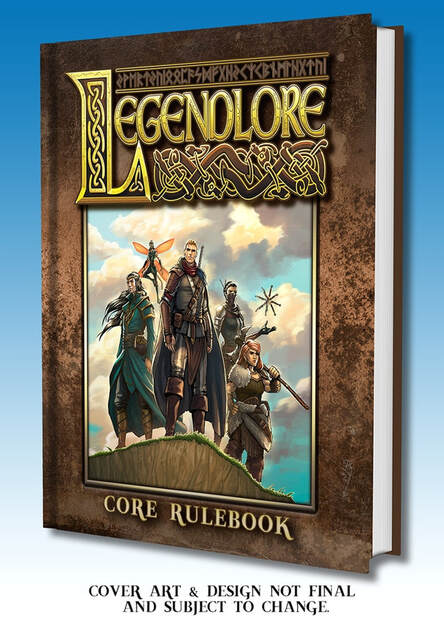

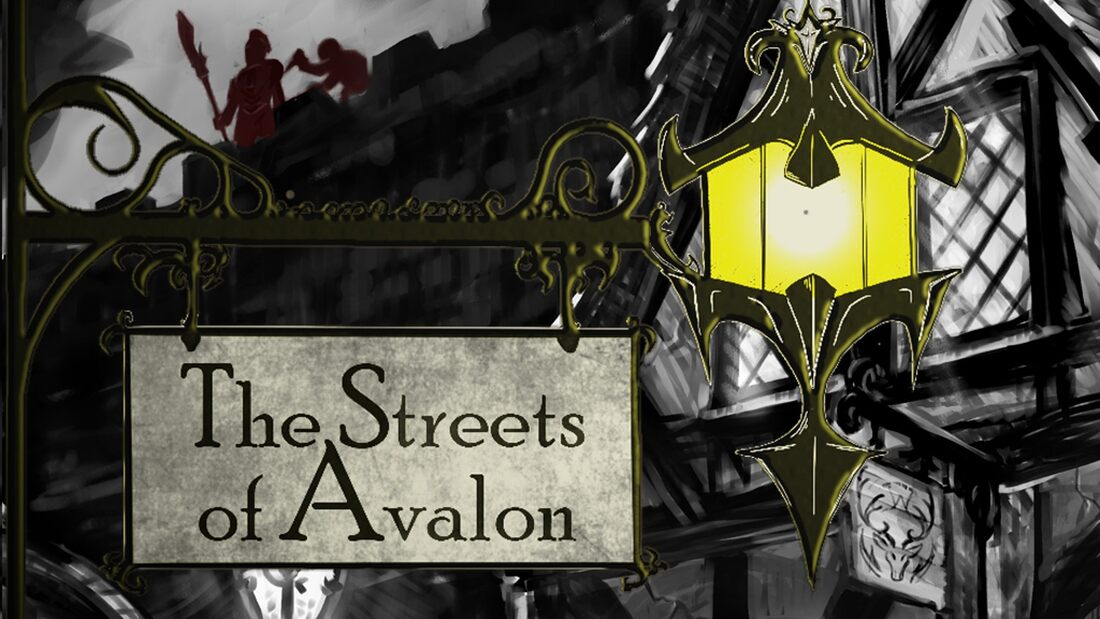
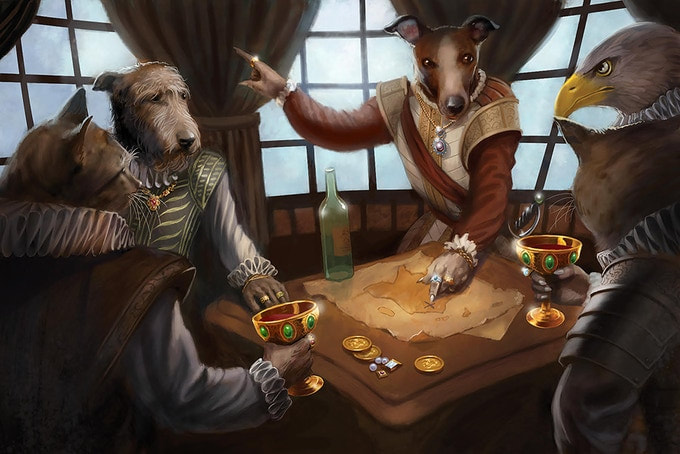
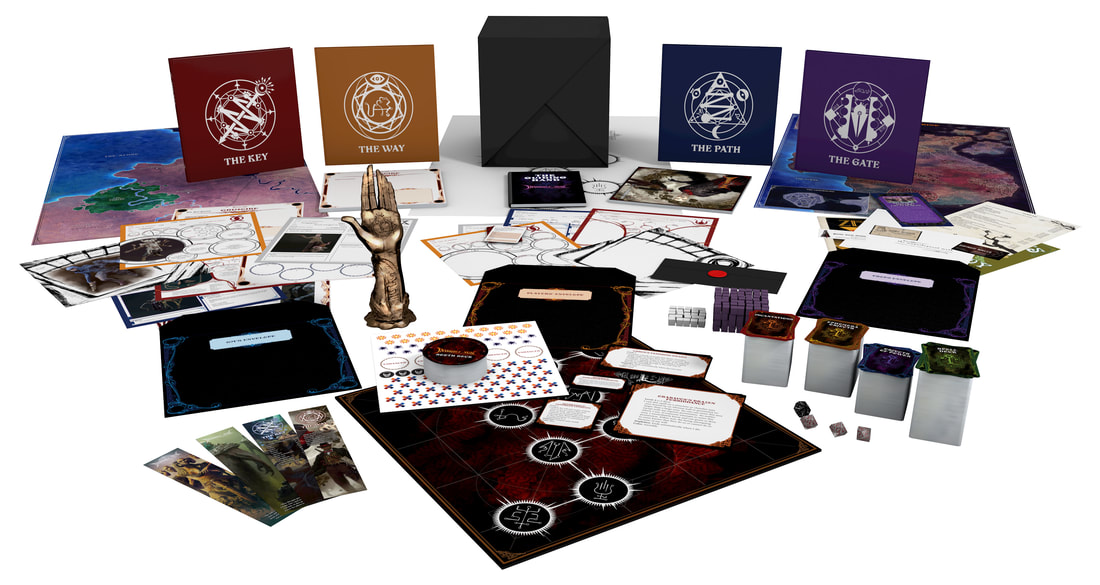
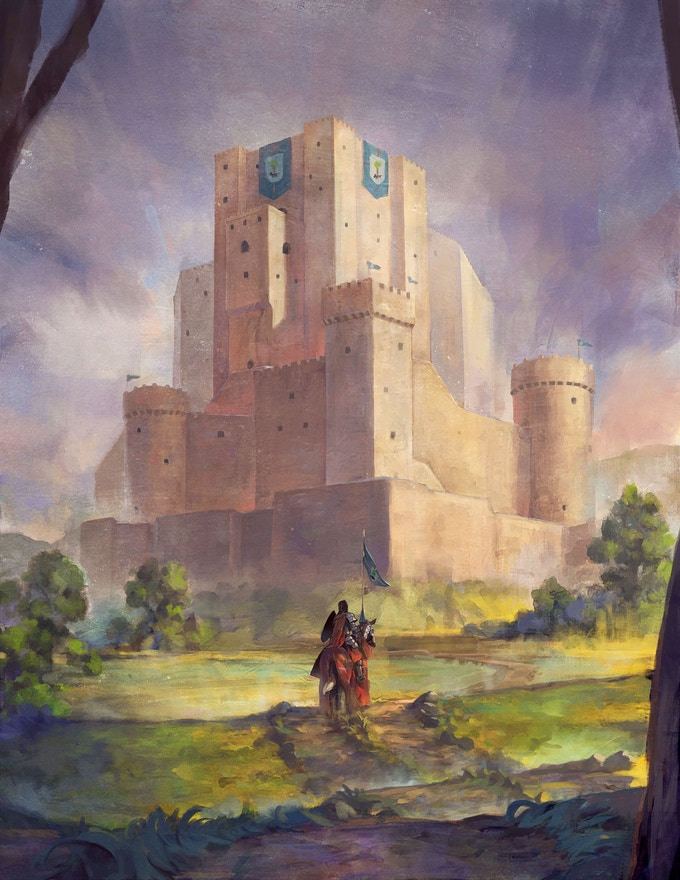

 RSS Feed
RSS Feed